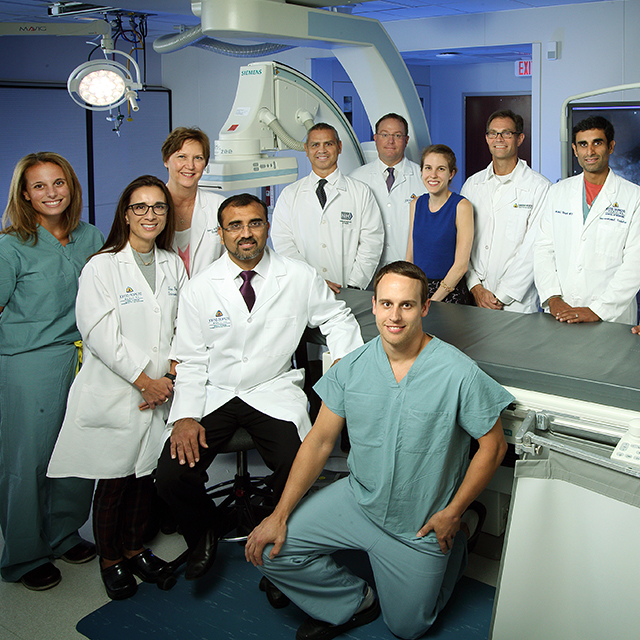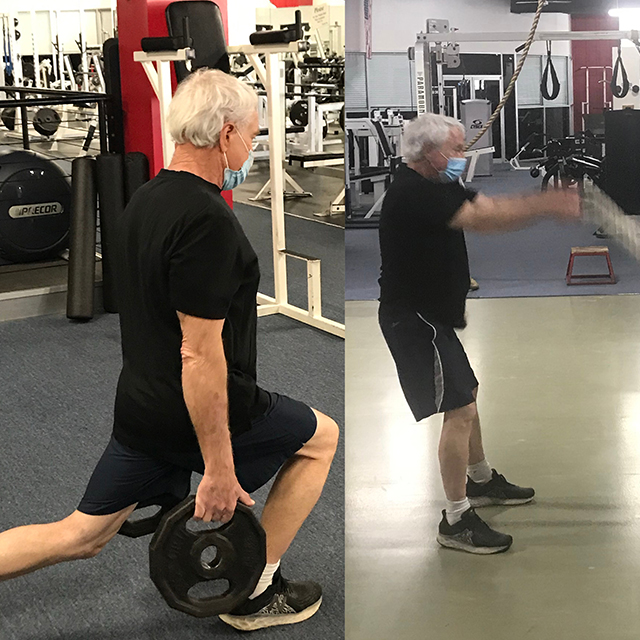Ted Eagles, 86, was on one of his twice-weekly, 7-mile walks along the C&O Canal northwest of Washington, D.C., in early 2021 when he started to feel increasingly out of breath. He was surprised, because he didn’t usually struggle with the steep incline back up from the canal.
“I couldn’t tell you what was wrong, but I just didn’t feel right,” the Washington resident says. “I wondered how much was real and how much I was imagining.”
Eagles drove home and laid down, and the feeling seemed to abate. He ran errands the next day, but couldn’t sleep that night. He says he noticed his shallow breathing, and could hear his heart valves regurgitating — a condition in which heart valves leak blood, which Eagles had been diagnosed with two years earlier.
The same thing happened Sunday night. Using equipment he had at home, he determined that his oxygen was below normal levels, he had a dry cough and low-grade fever. His primary care physician suspected COVID-19, and told him to go to Sibley Memorial Hospital that Monday morning, Jan. 11.
It’s a good thing he did — doctors there determined he was in heart failure due to a ruptured cord in the mitral valve that separates the two chambers of the left side of the heart and normally prevents blood leakage. He did not have COVID-19.
Two days later, he was transferred to Suburban Hospital, where cardiothoracic surgeon Fayyaz Hashmi performed a minimally invasive mitral valve repair through a small incision on the side of Eagles’ chest. During the Jan. 19, 2021, procedure, Hashmi and Thomas Matthew, director of Suburban’s cardiothoracic surgery program, repaired the defective leaflet and then stabilized the valve with a specialized ring.
“The valve repair was very successful,” Eagles says. “I had an excellent recovery.”
While open-heart surgery is regularly performed throughout the country, minimally invasive heart surgery is available only at certain centers. Johns Hopkins Cardiothoracic Surgery at Suburban Hospital is one of just a few places in the Greater Washington area that regularly perform minimally invasive cardiothoracic surgery.
In traditional open-heart surgery, the sternum is split open and the patient is placed on a heart-lung machine to pump oxygen into the blood while the heart rests during the procedure.
In minimally invasive cardiothoracic surgery, the surgeon accesses the heart through a small incision on the side of the chest. For the patient, this means shorter intensive care unit stays and recovery times, less time on ventilation and less bleeding, which lowers the chances of needing a blood transfusion, says Hashmi.
“You can get back on your feet much faster than if you had conventional open-heart surgery,” he says.
Using minimally invasive methods developed over the last two decades, cardiothoracic surgeons at Suburban Hospital are able to perform coronary bypass surgery; treat the narrowing of heart valves, aneurysm and valve leaks; and repair or replace artificial valves without having to open the sternum. The cardiothoracic surgery program at Suburban performs more than 200 cardiothoracic procedures per year.
The surgeons who run the program, Hashmi and Matthew, each have more than 25 years of experience. “Dr. Matthew and I work as a team, consulting each other on almost every patient,” Hashmi says. “Preop and postop: Every patient is seen by both of us.”
Throughout his surgery and recovery, Eagles felt that those caring for him were working together on his behalf, and he was reassured by Hashmi’s friendly demeanor and accessibility. “Dr. Hashmi has a remarkably empathetic personality. He radiates understanding and confidence, and came across as a profoundly kind person.”
Eagles got back to walking, thanks in part to the cardiac rehab team at Suburban.
On a recent sunny day, after taking the bus for part of a journey to downtown Washington, he decided to walk on the way back.
“If I can walk 3½ miles, half of it uphill, I think I’m doing OK,” he quips. “I’m willing to stress myself with exercise. I’m pushing my limits, which is good.”


